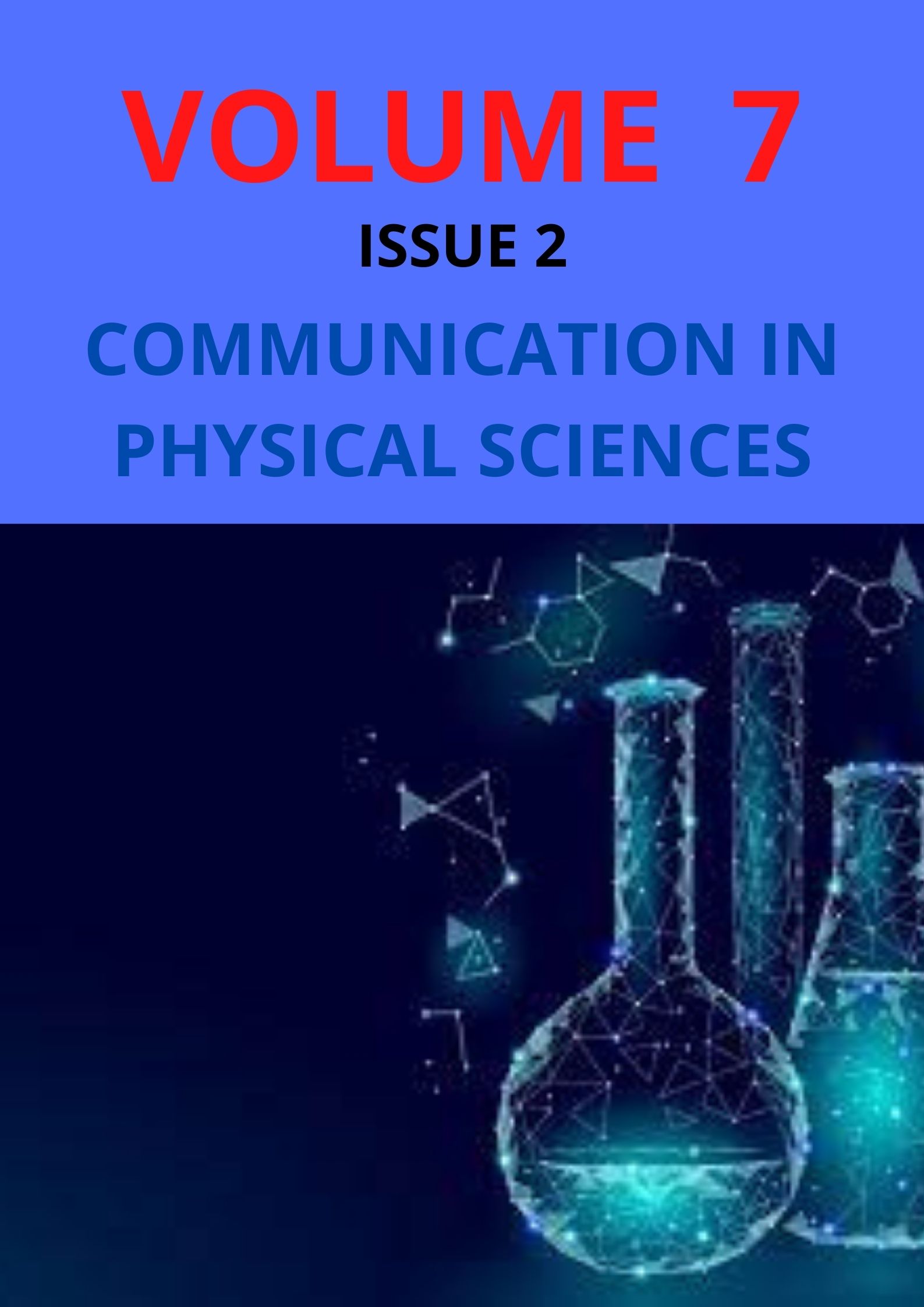Copper(II) and Zinc(II) Complexes Synthesized by Green Mechanochemical Method and their Antimicrobial Studies
Keywords:
Mechanochemistry, Schiff base, azomethine, complexes, antimicrobial activityAbstract
Sani* and I. T Siraj
Schiff base ligand derived from condensation of 2-hydroxy-1-naphthaldehyde and 2-aminobenzothiazole were synthesized via mechanochemical technique and used for the preparation of Cu(II) and Zn(II) complexes. The Schiff base and complexes were characterized by infrared spectroscopy, powder x-ray diffraction, Thermogravitric/thermal analysis, CHN analysis, solubility test, conductivity measurement and magnetic susceptibility measurement. Infrared spectral study indicated a strong band in the spectra of the Schiff base at 1603 cm-1 assigned to azomethine stretching vibration. The azomethine band shifted to 1621 and 1599 cm-1 in the IR spectra of Cu(II) and Zn(II) complexes respectively indicating the formation of complex compounds. The decomposition temperatures of the complexes are in the range of 240 - 264 oC indicating good thermal stability. Molar conductance values are in the range of 6.34 - 9.8 Ohm-1cm2 mol-1, indicating non electrolytic nature of the synthesized complexes in ethanol. Magnetic susceptibility measurement indicated that Zn(II) complex is diamagnetic while Cu(II) complex is paramagnetic and exhibit magnetic moment of 2.059 BM, the values correspond to the square planar geometry. The theoretical and experimental analytical data of C, H and N for the Schiff base and complexes are in good agreement. The Schiff base ligand and metal complexes have been studied for microbial activity using pathogenic bacteria (Escherichia coli and Staphylococcus aureus) and fungal pathogens (Candida albican and Asperigillus fumigatus) by agar well diffusion method. The results indicated that metal complexes (07 - 19 mm diameter inhibition zones) are more active than Schiff base ligand (07 - 14 mm diameters) against the test organisms.
Downloads
Published
Issue
Section
Similar Articles
- Samuel A. Egu, Akachukwu Ibezim, Efeturi A. Onoabedje, Uchechukwu C. Okoro, N-Myristoyl Transferase Inhibitors with Antifungal Activity in Quinolinequinone Series: Synthesis, In-silico Evaluation and Biological Assay , Communication In Physical Sciences: Vol. 5 No. 4 (2020): VOLUME 5 ISSUE 4
- Kayode Idowu Ogungbemi, Williams Igoniye, Zaccheaus Ayo Ibitoye, Margret Abosede Adedokun, Olusola Olurotimi Oyebola, Radiation Doses in Fishing Water and Coast Soil in Lagos State South West Nigeria , Communication In Physical Sciences: Vol. 8 No. 4 (2022): VOLUME 8 ISSUE 4
- Uduak Aletan, Elijah Adetola, Ahmed Abudullahi, Olayinka Onifade, Hadiza Kwazo Adamu, Phytochemical analysis, invitro antioxidant activity and GC-MS studies of crude extracts of Cissus populnea stem , Communication In Physical Sciences: Vol. 8 No. 4 (2022): VOLUME 8 ISSUE 4
- A. E. Chukwude, Timing noise analysis of 27 HartRAO radio pulsars , Communication In Physical Sciences: Vol. 1 No. 1 (2010): VOLUME 1 ISSUE 1
- Habu Tela Abba, Miftahu Gambo Idris, Jibrin Suleiman Yaro, Mapping of Terrestrial Radioactivity Levels in Surface Soil. A Case Study of Damaturu L.G.A, Yobe State, Nigeria. , Communication In Physical Sciences: Vol. 4 No. 2 (2019): VOLUME 4 ISSUE 2
- Patrick G. Udofia, Philippa C. Ojimelukwe, Olusegun A. Olaoye, Anthony N. Ukom, Moses. L. Ekanem, Immaculata I. Okparauka, Evaluation of Antioxidant Activity of Ethanol Extract of Root and Stem Bark of Moringa oleifera (MO) obtained from Utu Ikpe, Ikot Ekpene Local Government Area, Nigeria , Communication In Physical Sciences: Vol. 8 No. 1 (2022): VOLUME 8 ISSUE 1
- Rakiya Haruna, Muneer Aziz Saleh, 222Rn activity concentration in outdoor air of Johor, Malaysia , Communication In Physical Sciences: Vol. 8 No. 2 (2022): VOLUME 8 ISSUE 2
- Abdullahi Usman, Ruth O. Onore, Osebuohien A. Oforghor, Jibrin Mohammed, Nasiru L. Usman, Total Phenolic and Flavonoid Contents, Antioxidant Activity and Phytochemical Screening of Calotropis Procera Stem Bark Extracts , Communication In Physical Sciences: Vol. 5 No. 3 (2020): VOLUME 5 ISSUE 3
- Ahmad Rufai Bala, Abdullahi Sahal , Phytochemical Screening and Anti-microbial Properties of Herbal Medicines used for Treatment of Typhoid and Bacterial/Viral Infection in Kaduna State , Communication In Physical Sciences: Vol. 11 No. 1 (2024): VOLUME 11 ISSUE 1
- Onyinyechi Uloma Akoh, Onuchi Marygem Mac-Kalunta, Stella Mbanyeaku Ufearoh, Ifeanyi Edozie Otuokere, Johnbull O. Echeme, Isolation, Characterization and Antimycobacterial Potency of a Steroidal Derivative from the Chloroform Crude Extract of Icacina trichantha Oliv Tuber , Communication In Physical Sciences: Vol. 11 No. 1 (2024): VOLUME 11 ISSUE 1
You may also start an advanced similarity search for this article.




